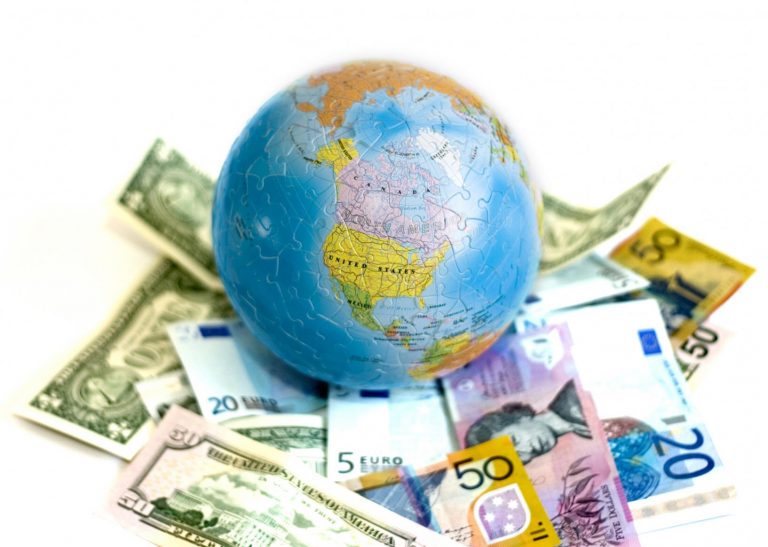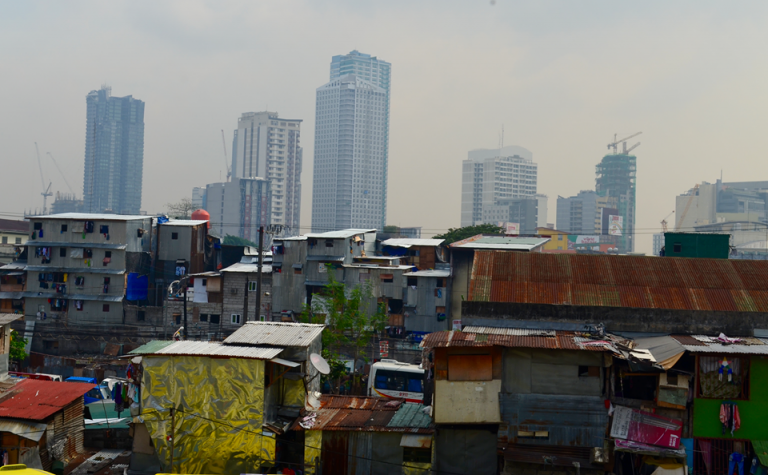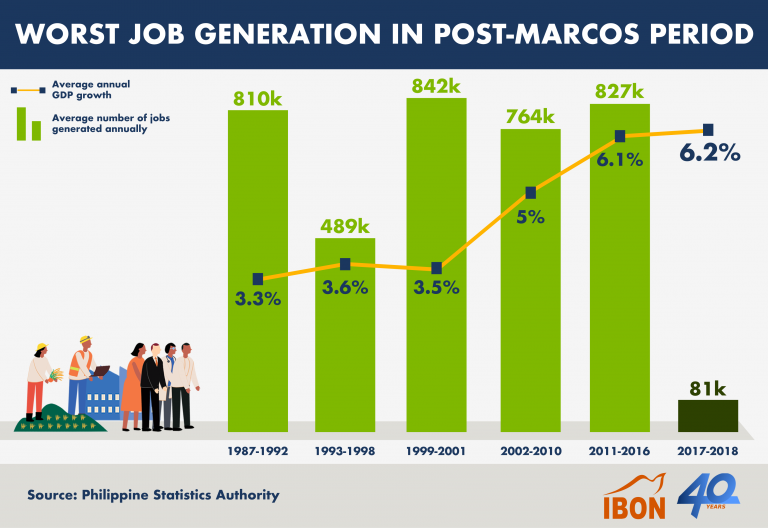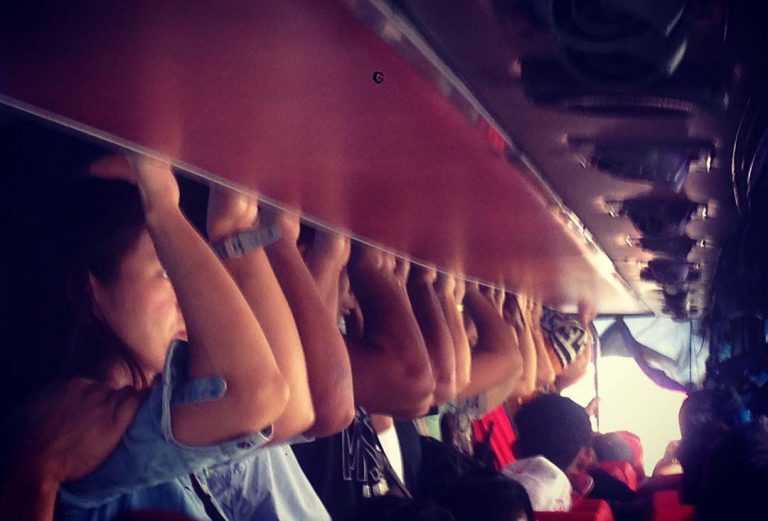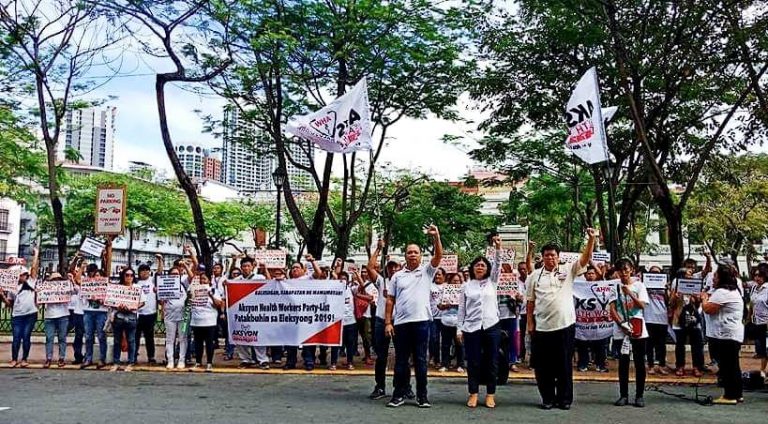by Sonny Africa
The Philippine economy is slowing amid a global economy in a new period of uncertainty, unpredictability and volatility. The country’s economic policymaking however remains stuck in an imaginary world of efficient free markets, beneficial globalization and humane capitalism. A clearer view of where the world is today compels new economics more than ever.
Recently released growth figures confirm the end of the economy’s hyped upward trajectory – 6.7% growth in 2016 stalled to 6.6% in 2017 and dropped sharply to 6.2% in 2018. The economic managers want to see last year’s growth as just some kind of blip and like to think that regaining momentum is just a matter of ramped-up spending, an infrastructure binge, and practiced optimism.
Aside from, of course, the silver bullet of foreign investment which is oddly but persistently portrayed as having miraculous powers.
Yet none of these will be enough to overcome the inertia of a still very much underdeveloped domestic economy. Much less amid a global economy that’s stumbling and a world economic order that’s in the middle of a shakeup.
Slowing global growth
Domestic hype around the Philippines’ recent episode of relatively rapid economic growth has distracted from how the world economy — and the advanced capitalist powers in particular — are still caught in the protracted crisis that started in 2008. Global growth is nowhere near pre-2008 levels and is even slowing.
Global gross domestic product (GDP) growth was at nearly 4% in the five years before 2008 but then averaged just 2.7% in the decade since then. The seeming recovery in 2017 to 3.2% is proving short-lived with growth slipping to an estimated 3.1% in 2018 and projected to keep edging down to 3.0% in 2019.
Even the advanced capitalist powers are faltering. US economic growth is seen to slow from an estimated 2.8% in 2018 to 2.5% this year, enough to remain a superpower but not enough to dissuade challengers. Even powerhouse China, where state intervention engineered the most spectacular growth for a large economy in modern history, is slipping – from 6.6% in 2018 to just 6.3% this year.
Europe and Russia are stagnant at some 2% and 1.5%, respectively, although Japan is seen to grow marginally faster to 1.4% this year. The so-called developing economies are also seen to slow from an estimated 4.4% in 2018 to 4.3% this year. Slowing economies worldwide underpin the slowing growth in overseas Filipino remittances as well as the weakening of foreign investment flows into the country.
This is also showing up as a slowdown in trade. By volume, growth in global trade slowed from 5.3% in 2017 to an estimated 3.8% in 2018. These are already reflected in the Philippine’s slowing exports. For instance, the slowdown in shipping and ship orders is among the reasons for the troubles of Hanjin Philippines which went into receivership at the start of the year. Even service exports are pinched with business process outsourcing (BPOs) and call centers starting to lose much of their sheen.
Post-globalization
The world economy and international economic relations have always been determined by the big global powers and their self-interest, notwithstanding being dressed up in various guises of benevolent internationalism. This big power self-interest gave rise to the United States (US)-dominated post-Second World War order of Bretton Woods, the International Monetary Fund (IMF) and World Bank, World Trade Organization (WTO) and the dizzying array of bilateral, regional and multilateral free trade agreements (FTAs).
And it’s the same big power self-interest that is modifying this. The most visible is the emergence of the China-centered Asian Infrastructure Investment Bank (AIIB), New Development Bank (NDB), Belt and Road Initiative (BRI), and Silk Road Fund, among others.
But even mechanisms of the post-war order are being modified. The US is becoming obstructionist in the WTO to create leeway for its protectionism. It is also carving out spheres of influence and derailing an organization that it feels China used to strengthen its economy.
The global array of supposedly liberalizing FTAs is disrupted by the steadily escalating trade war between the two biggest economic powers. The US and China have increased tariffs on hundreds of billions of dollars’ worth of exports to each other. The US has also already invoked national security to restrict Chinese investments in technology firms and is considering controlling Chinese students and even banning Huwaei and ZTE devices.
Not that trade was ever completely free between them. Still, after new tariffs especially by the US in 2018, some 90% of their trade with each other is now subject to trade barriers. The US has taken the lead in brazen unilateralism and it may just be a matter of time before other major powers follow suit.
In any case, governments around the world are sticking to or reloading and reusing their protectionist guns. Global Trade Alert (GTA) reports G20 countries implementing over 9,041 protectionist measures since 2008 with the biggest number in a year having been implemented in 2018. The most common measures include targeted state subsidies, export support, tariffs and other trade protection, government procurement restrictions, and foreign investment controls.
Building on these post-war mechanisms, there was a show of global cooperation after the 2008 financial crisis with the G8 and G20 governments pledging greater coordination of their financial and fiscal policies. This has not happened and, if anything, there is the United Kingdom (UK) leaving the European Union (EU) with Brexit.
Yet such coordination, if such was even possible, is more important than ever. The world is looking much the same as just before the explosive financial crisis in 2008.
Debt levels are higher than ever and borrowing costs are rising. The Institute of International Finance has estimated global debt at over US$244 trillion as of the third quarter of 2018; this is 318% of global GDP which is higher than the 290% at the end of 2008 during the last global financial crisis.
The danger is that this much larger debt has not been matched by a similar growth in the real economy which, in effect, means that the record debt is even more unpayable than before. The US, Europe, Japan and China all undertook massive debt-driven stimulus programs in the last decade to try and deal with the crisis. Growing debt and rising interest rates create the conditions for a global financial crisis – which could be triggered by a stock market crash, bursting of a real estate bubble, banking crisis, a non-economic crisis, or some combination of these.
Tensions and contradictions
And it’s not as if it’s just the economy that matters for the economy. Unlike in textbooks, in the real world there are things like festering social unrest and geopolitical risks which have real economic effects.
The trade war between US and China is just one part of their larger battle for economic supremacy. The US remains the world’s premier economic and military superpower. China is however ever more openly challenging this. The AIIB and NDB it set up are global finance and economic institutions to match the US-dominated IMF and World Bank.
But there is also its “Made in China 2025” drive to be a high-technology manufacturing power. This increases China’s productivity, will make its economy larger than the US, as well as expand its military capacity. The BRI, estimated to cost anywhere from US$1-8 trillion, is an infrastructure strategy relieving excess capacity but also increasing Chinese influence across Asia, through the Middle East, to North Africa, and all the way to Europe.
The scale of their competition cannot but have repercussions. The infrastructure investment fund the US is piloting in Asia may grow to the point that countries will be pressured to take sides, the US or China, which will disrupt existing economic relations.
The increasingly fragile global economy is also vulnerable to any of a number of potentially destabilizing flashpoints around the world.
Closest to home are the territorial disputes in the West Philippine Sea where any increase in China’s aggressiveness may be met by a greater pushback from the US military. But there are also many others: the Syrian conflict may escalate again especially upon heightened US military action; the US appears set to increase its economic sanctions and other efforts to weaken and isolate Iran; and the US and its allies will continue to pressure North Korea particularly on its nuclear program. Even Russia might become more aggressive and take military action in the Ukraine.
Bubble economics
The world situation is unstable but domestic economic policymaking is trapped in a bubble.
Free market policies of neoliberal globalization have been steadily implemented over nearly forty years since the early 1980s. These have just made the domestic economy the shallowest it has ever been with agriculture and Filipino industry in chronic decline. More than any short-term factors, these unsound fundamentals are the ultimate reason for the worst job generation in decades as well as the highest inflation, weakest peso, worst current account deficits, lowest international reserves, and worst government deficits and debt in years.
The economy is under stress yet economic managers are sticking to antiquated free market policies that even the big powers are less and less inclined to. Huge shifts are taking place in the global economy and, if only for these, huge reforms are needed in the country’s economic policies. What these are exactly is not clear. The Philippines has to take not just the global turbulence but also the damage from some four decades of neoliberalism into consideration.
What is clear however is the direction that must be taken: replacing neoliberalism with a People Economics that is biased for the majority over a few and the national economy over self-interested foreign powers. ###



